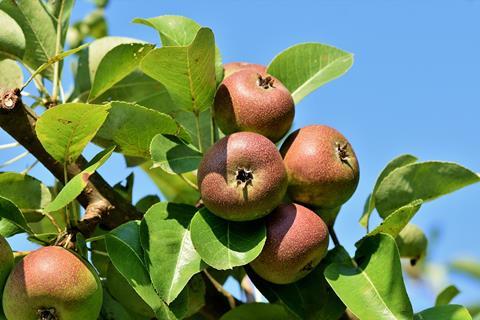A pivotal study illuminates the genetic dynamics in tissue-specific interactions between apple trees and Valsa mali, a fungus causing severe disease. By examining the adaptive regulation of miRNAs and milRNAs, researchers uncover distinct expression profiles crucial for understanding and potentially manipulating the plant’s defense mechanisms against pathogens. This discovery represents a significant advancement in developing targeted strategies for crop protection.

Plant pathogens often infect specific tissues, causing significant agricultural losses. Recent studies highlight the crucial role of small RNAs (sRNAs), including miRNAs, in regulating these interactions. sRNAs can modulate plant immune responses and pathogen virulence, making them key players in plant-pathogen dynamics. Despite advances, the tissue-specific roles of miRNAs in these interactions remain largely unexplored. Due to these challenges, in-depth research on miRNA regulation during plant-pathogen interactions is essential to develop effective strategies for crop protection.
Apple tissues under attack
Researchers from Northwest A&F University have made significant strides in this area, with their findings (DOI: 10.1093/hr/uhae094) published in the prestigious journal Horticulture Research on April 2, 2024. The study delves into the differential expression of miRNAs/milRNAs in apple tissues under attack by Valsa mali, offering insights into the plant’s defense mechanisms.
This study uncovers the tissue-specific expression patterns of miRNAs and milRNAs in apple during Valsa mali infection. The researchers identified key miRNAs, such as Mdo-miR482a, which is upregulated in apple bark and targets an NLR gene, reducing the plant’s resistance to the pathogen. Similarly, Vm-milR57 in V. mali was found to target essential pathogenicity-related genes, enhancing the fungus’s virulence.

The study demonstrates that miRNAs in apple bark play a significant role in response to pathogen attack, while miRNA regulation in leaves appears minimal. Additionally, the research highlights the cross-kingdom interaction where V. mali milRNAs can target apple genes, influencing the plant’s defense mechanisms. These findings provide a deeper understanding of the complex regulatory networks involving miRNAs and milRNAs, emphasizing their critical roles in plant immunity and pathogen adaptation.
Crop resistance
Dr. Lili Huang, a lead scientist on the project, emphasizes the significance of these discoveries, stating, “Our research not only advances our understanding of plant-pathogen interactions but also paves the way for developing novel approaches to enhance crop resistance against diseases.”
The implications of this research are far-reaching, offering potential applications in the development of resistant apple cultivars through genetic modification or breeding programs. By manipulating the expression of these sRNAs, scientists may be able to create plants that can better withstand the ravages of pathogens like Valsa mali, ensuring food security and reducing economic losses in agriculture.







No comments yet